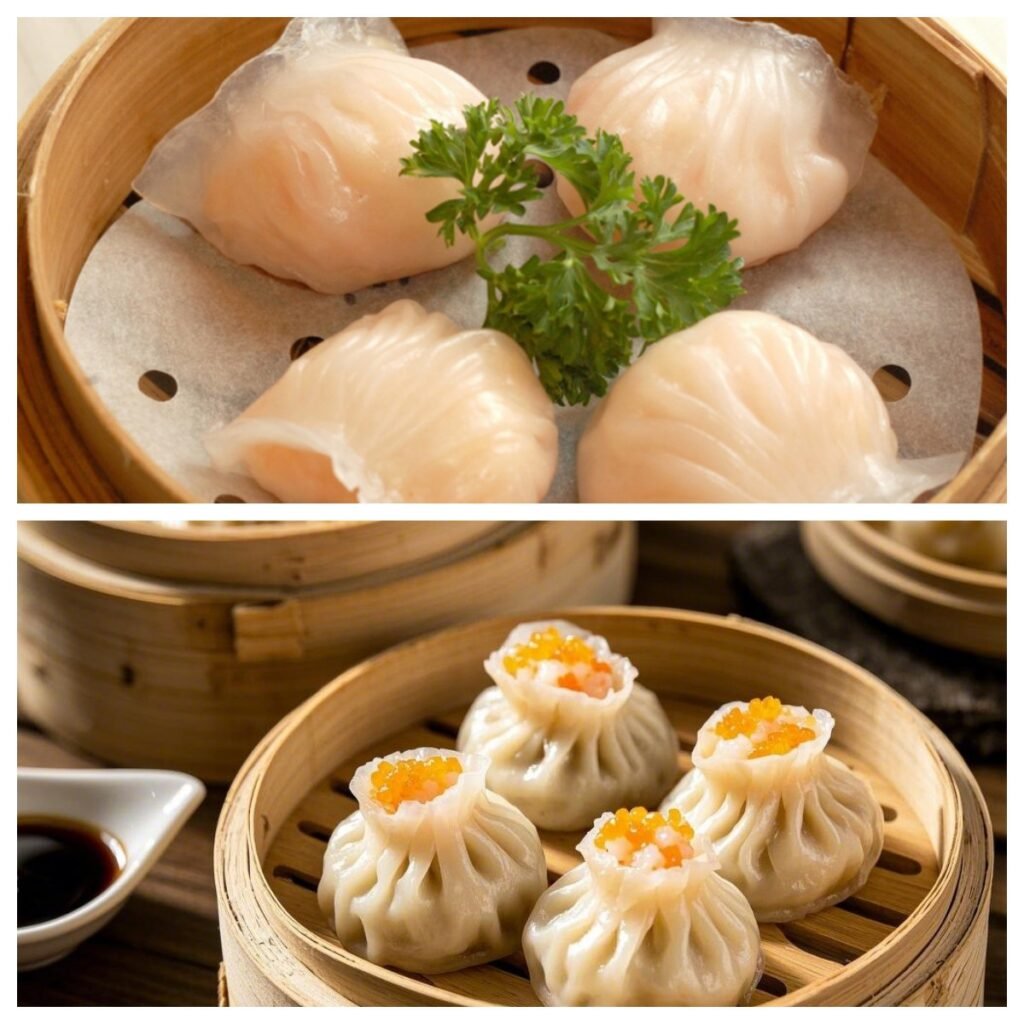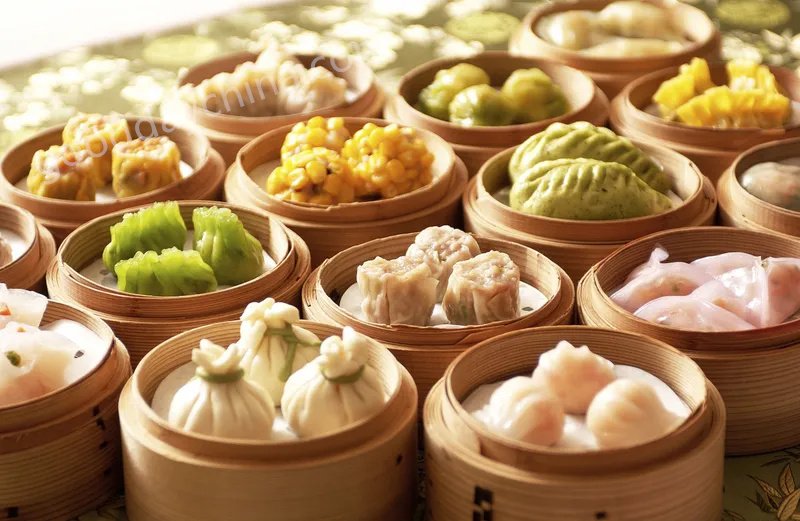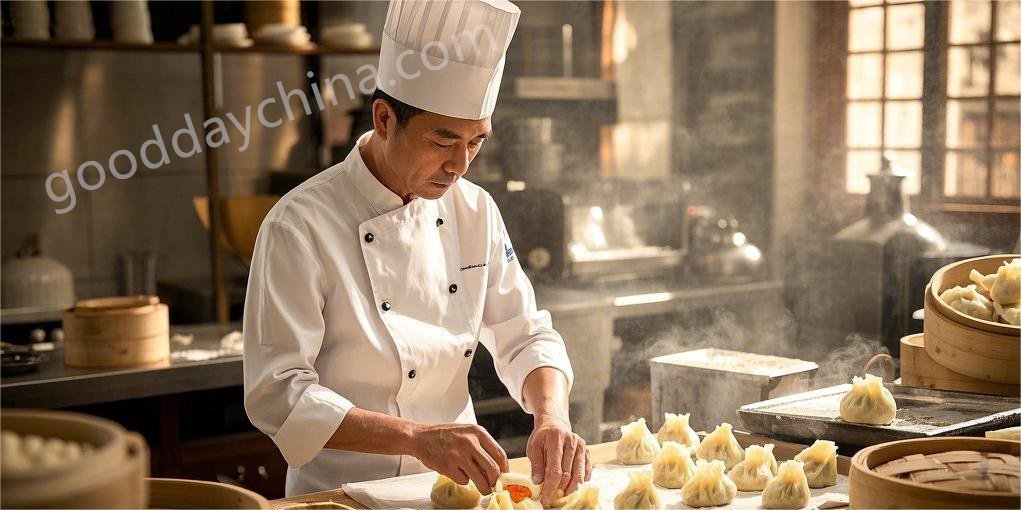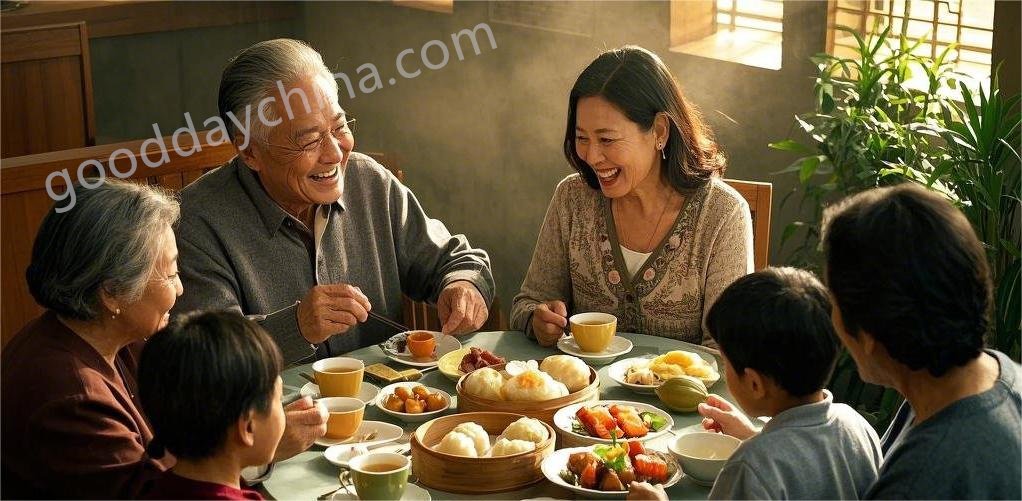Table of Contents
ToggleDim sum is more than just a meal — it’s a cultural experience that tells a story of history, family, and tradition. But what does the term dim sum mean in Cantonese? In this article, we’ll explore its meaning, origin, and how this delightful culinary tradition has captivated food lovers worldwide.
❖ What Does the Term Dim Sum Mean in Cantonese?
The term dim sum (點心) literally translates to “touch the heart.” In Cantonese culture, dim sum was originally designed as a light snack meant to “touch the heart” rather than satisfy hunger. Over time, it evolved into a cherished dining experience shared among family and friends.
Dim sum dishes range from delicate shrimp dumplings (har gow) to flavorful bbq pork buns, reflecting the diverse culinary skills of talented dim sum chefs.

❖ The Historical Roots of Dim Sum
Dim sum’s origins can be traced back to the Silk Road, where travelers and merchants sought quick, satisfying meals. Tea houses (known as “cha lau”) began serving snacks alongside tea, giving birth to the now-famous “yum cha” tradition — a social dining experience that combines tea drinking with a variety of small dishes.

❖ Traditional Dim Sum Dishes You Must Try
Dim sum is renowned for its incredible variety. Here are some must-try dishes:
- Shrimp Dumplings (Har Gow): These translucent dumplings filled with plump shrimp are a dim sum staple.
- Siu Mai: An open-topped dumpling filled with pork and shrimp, often garnished with crab roe.
- BBQ Pork Buns (Char Siu Bao): Fluffy steamed buns stuffed with sweet and savory barbecued pork.
- Steamed Buns: From custard-filled buns to savory pork buns, these are soft and satisfying.
- Deep Fried Treats: Crispy spring rolls and turnip cakes offer delightful crunch and flavor.

❖ Dim Sum Restaurant Culture: What to Expect
Visiting dim sum restaurants can feel like stepping into a lively cultural hub. Traditionally, carts filled with steaming baskets are wheeled around, allowing diners to select their dishes table-side. Today, some restaurants use menus for ordering.
Tips to Order Dim Sum Like a Pro:
- Start with classics like shrimp dumplings and siu mai.
- Pair your meal with Chinese tea — a must-have beverage that complements dim sum flavors.
- Don’t forget to ask servers for their specialty dishes or seasonal favorites.

❖ The Role of Dim Sum Chefs in Preserving Tradition
Experienced dim sum chefs are revered for their mastery in creating delicate and flavorful dishes. From perfecting the thin wrapper of shrimp dumplings to steaming the softest steamed buns, their expertise is key to maintaining dim sum’s authenticity.

❖ Dim Sum’s Cultural Significance
Beyond its culinary value, dim sum plays an important social role. It’s a time for family and friends to gather, bond, and enjoy conversation. The act of sharing food from communal plates reflects the Cantonese spirit of togetherness.

❖ Dim Sum’s Global Influence
Dim sum has transcended borders, becoming a beloved cuisine worldwide. From Chinatown eateries in major cities to Michelin-starred establishments, dim sum continues to evolve while retaining its traditional essence.
❖ Dim Sum — A Culinary Journey That Touches the Heart
So, what does the term dim sum mean in Cantonese? It’s more than just “touch the heart”—it embodies family, tradition, and delicious flavors. Whether you’re savoring delicate shrimp dumplings, enjoying fluffy steamed buns, or sipping tea with loved ones, dim sum is a cultural treasure that unites people across the world.
Next time you visit a dim sum restaurant, remember that each dish carries a story — a story that began on the Silk Road, found its way to bustling dim sum restaurants, and continues to bring joy to tables worldwide.

✈️ Planning a trip to Hong Kong? Don’t forget to check the local voltage and plug types to avoid charging issues! 👉 Hong Kong Plug Guide: Essential Info for Travelers
🎊 Curious about what to wear for Hong Kong’s Lunar New Year celebrations? Discover traditional outfit ideas to embrace the festive spirit! 👉 Hong Kong New Year Traditional Attire Guide
FAQ
🎯Frequenlty Asked Questions

📌Where did dim sum originate from?
Dim sum originated in southern China, closely linked to the Cantonese tradition of yum cha (drinking tea) and the historic Silk Road trade routes.
📌What are the most popular dim sum dishes?
Popular dim sum dishes include shrimp dumplings (har gow), siu mai, BBQ pork buns, and deep-fried spring rolls.
📌How do you order dim sum in a traditional Cantonese restaurant?
Diners typically select dishes from carts or menus, choosing from steamed buns, dumplings, and other specialties designed to share with family and friends.
📌Why is dim sum associated with family gatherings?
Dim sum is deeply rooted in social traditions, where families and friends gather over tea and shared dishes to connect and enjoy quality time together.

